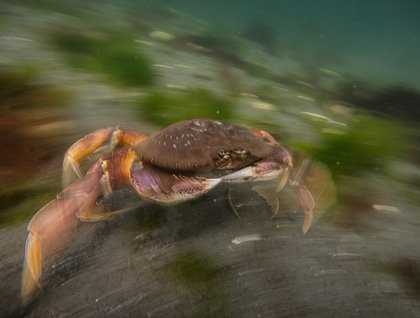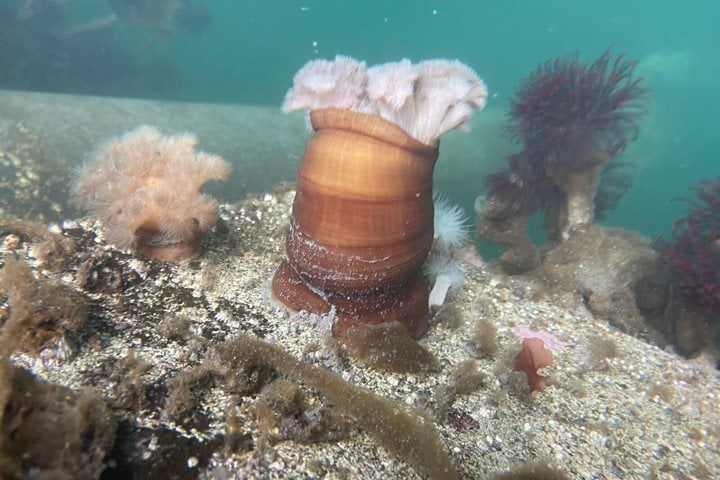With the tide dropping lower by the minute and depths getting shallower and shallower, we were able to reach outer reefs often just a little too deep for us to explore. While guests were ashore watching a brown bear graze through the growing intertidal zone, Purser Shawn and I donned dry suits and powered up cameras for a dive into the green waters of Peril Strait. Visibility has been steadily increasing as the days go by and we are happy to see numerous jellies pulsing to and fro, a sure sign of clear water ahead. Using a depth sounder, we scanned the bottom for the telltale sign of an offshore reef and there it was, rapidly rising up from over 150 feet to 30 in just a matter of yards. One last safety check and we splashed down, descending into an unknown world of weird creatures and foreign life.
The flat-topped reef stepped down in increments of 10-20 feet, small plateaus connected by vertical walls just perfect for filming and photographing. We swam along and quickly encountered a very large Puget Sound king crab eating an excavated cockle it had recently crushed with a powerful claw. A well-manicured crevice was a sure sign of the giant Pacific octopus. Unfazed by our noisy presence, the huge octopus peered out with a watchful eye but never came out to investigate the aliens lurking at its threshold. Sadly, our air supply is limited so we began the slow meander up the wall, back to shallower waters. Along the way we spotted the very unusual grunt sculpin and were even visited briefly by a large Steller sea lion.
As we headed back out towards Chatham Strait, lunch was interrupted by several large black triangles in the distances. For the third time this trip, we’ve been lucky to see killer whales plying through the calm waters of Southeast Alaska. Even though the rain came through in heavy pulses, everyone was out on deck to spy these massive dolphins and were happy to see a very small killer whale in the bunch. The calf swam very close to a large female, likely its mother, aunt, or grandmother and occasionally it would break through the surface showing us its brownish eye patch, a sure sign of its young age.







